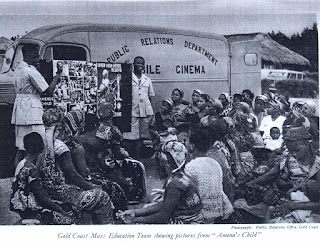describes the use of 1950s mobile cinema as the "British Empire’s forgotten propaganda tool for ‘primitive peoples’" (Rice, 2016). However, at the time film was a way to provide distance education in remote areas, with advice being provided by bodies UNESCO on its use (1949). The film van of the 1950s could be thought of in much the same way as digital multimedia via the Internet is used for education now (Worthington, 2014). Today's MOOCs could be seen as a continuation of a form of soft-power projection, with governments using on-line education to shape views in developing nations and to ope up trade.
As a digital update to the Colombo Plan, in 2001 the Australian Government announced a five year $230M "Virtual Colombo Plan", to support of Distance Education programs based in developing countries. However, Rooksby (2004) asked if this was, at least in part, intended to open developing countries’ markets to international competition.
The "free" massive open on-line courses (MOOCs) could be seen as a continuation of this use of education by some countries to promote their values and open up trade in developing nations.
Reference
- Letter from Crocker to Casey, Notes on Colombo Plan Aid in India, Efficacy of Colombo Plan aid
New Delhi, 25 April 1953
[NAA: A10299, C15] Australian Department of Foreign Affairs and Trade. URL http://dfat.gov.au/about-us/publications/historical-documents/Pages/volume-24/251-Letter-from-Crocker-to-Casey.aspx - da Cruz, Marghanita (2015). 1930s Annandale : a short walk. Ramin Communications. [Annandale, New South Wales] URL http://www.ramin.com.au/annandale/story5.shtml#raycophone
Film Centre, London. & Unesco. (1949). The use of mobile cinema and radio vans in fundamental education. Paris : UNESCO
Rice, T. (2016). ‘Are you
proud to be British?’: Mobile film shows, local voices and the demise
of the British Empire in Africa. Historical Journal of Film, Radio and Television, 36(3), 331-351. URL http://dx.doi.org/10.1080/01439685.2015.1049863
Rice, T. (2017, 24 August). British Empire’s forgotten propaganda tool for ‘primitive peoples’: mobile cinema. The Conversation. URL https://theconversation.com/british-empires-forgotten-propaganda-tool-for-primitive-peoples-mobile-cinema-64275
Rooksby, E. (2004). The virtual colombo plan: Implications for developing countries. Journal of Information, Communication and Ethics in Society, 2(3), 169-178. URL http://www.emeraldinsight.com/doi/abs/10.1108/14779960480000251
Worthington, T. (2014, August). Chinese and Australian students learning to work together online proposal to expand the New Colombo Plan to the online environment. In Computer Science & Education (ICCSE), 2014 9th International Conference on (pp. 164-168). IEEE. URL https://doi.org/10.1109/ICCSE.2014.6926448

No comments:
Post a Comment